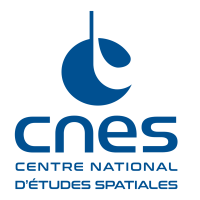Depuis plus de 60 ans, le CNES entretient une activité « ballons », une des plus importantes au monde. Les ballons sont les seuls véhicules capables d’étudier in situ et durablement l’atmosphère jusqu’à 40 km d’altitude.
Informations essentielles
Chiffres clés
-
60
ans d’activités ballons au CNES
-
20
à 40 km altitudes d’excursion
-
4
grandes familles de ballons (BSO, BPS, BALMAN, BLD)
-
+4000
ballons lancés par le CNES depuis 1961
Dates clés
- 2024 : 1er vol BSO transatlantique entre la Suède et le Canada
- 2019 : 1ère campagne Stratéole-2 aux Seychelles
- 2017 : Campagne sur la base d’Alice Springs en Australie
- 2014 : 1ère campagne scientifique depuis la base de Timmins au Canada
- 2013 : Qualification d’un nouveau système aérostatique sécurisé pour les BSO
- 2005 : Campagne en Antarctique à Mac Murdo
- 1997 : Premiers vols de longue durée circumpolaires en période hivernale
- Décembre 1982 : Premier tour du monde d’une expérience scientifique transportée par une montgolfière infrarouge
- 6 août 1977 : Premier vol transméditerranéen (Sicile-Espagne)
- 1966 : Ouverture du centre de lâchers de ballons de Gap-Tallard
- 12 septembre 1964 : Inauguration officielle du centre de lancements Aire sur l’Adour rattaché au CNES
- Février 1962 : Premiers lâchers hors de l’hexagone aux îles Kerguelen
- Octobre 1961 : Lâcher des premiers ballons stratosphériques du CNES
- 4 juin 1783 : Ascension du premier aérostat à air chaud, la « montgolfière »
Le projet en bref
Capable de rester durablement de 20 à 40 km d’altitude, plus haut que les avions, plus longtemps que les fusées-sondes, le ballon reste un véhicule unique pour collecter des données in situ dans la stratosphère. Ecologique, le ballon accède au lieu final de sa mission sans moteur ni combustible.
Depuis la fin du 19ème siècle, les scientifiques utilisent les ballons principalement pour l’étude de l’atmosphère ou en astronomie.
Dans l’atmosphère, les instruments embarqués par les ballons permettent de mesurer in situ les vents, les quantités de gaz à effet de serre, les aérosols ou les radiations. En astronomie, le ballon permet l’observation de l’Univers à l’aide de télescopes de plusieurs centaines de kilos portés au-dessus des couches denses de l’atmosphère.
Les ballons peuvent ainsi compléter les observations satellitaires et les mesures faites au sol.
En dérivant dans l’atmosphère, les ballons permettent d’étudier les phénomènes physico-chimiques et de prélever des échantillons d’air. Ainsi ils ont contribué aux études sur la couche d’ozone, à rechercher des gaz et particules à effet de serre ou encore à mieux comprendre les mécanismes de mousson en Inde et en Afrique.
Avec le développement des activités spatiales, le champ d’application des ballons s’est élargi. Ils ont trouvé une utilité technologique. Des instruments ou des équipements, destinés à être embarqués à bord des satellites, sont testés sous ballons à très haute altitude tels des détecteurs d’étoiles, des caméras thermiques, des cellules solaires…
Les ballons répondent aux besoins de nombreuses familles scientifiques. Ainsi les astronomes utilisent les ballons lancés au-delà des couches denses de l’atmosphère, pour capter certains rayonnements non visibles qui parviennent peu au sol comme l’infrarouge ou l’ultraviolet, ou pas du tout comme les rayons X et Gamma. Les astrophysiciens profitent de certains vols pour valider des techniques instrumentales tout en collectant des données scientifiques importantes.
Le ballon est parfois utilisé pour larguer à haute altitude la maquette d’un corps de rentrée atmosphérique (bouclier thermique d’une sonde planétaire, avion suborbital, navette spatiale, décélérateur martien…) dont on veut étudier l’aérodynamique à une échelle plus représentative qu’en soufflerie.
Rôle du CNES dans le projet
Créée sous l'impulsion de la communauté scientifique au début des années 1960, reprise et développée par le CNES, l’activité Ballons consiste à concevoir puis opérer des véhicules aérostatiques permettant d’emporter des instruments scientifiques ou de mener des essais technologiques.
Le CNES est impliqué dans de nombreux projets ballons :
IN-AIR (Infrastructure Nationale des Aéronefs Instrumentés pour la Recherche) :
Cette infrastructure exploite une vaste flotte d’aéronefs instrumentés permettant de réaliser des observations variées de la Terre et de l’Espace, ainsi que des validations d’innovations technologiques dans l’aéronautique et le spatial. Les aéronefs mis à disposition des communautés scientifiques sont :
- Des avions laboratoires (ATR 42, Piper Aztec) permettant d’embarquer jusqu’à 2 tonnes de charge scientifique ;
- Des ballons stratosphériques ouverts, qui sont l’unique moyen d’envoyer dans la stratosphère plusieurs centaines de kg de charge scientifique ;
- Des ballons pressurisés permettant de mener des mesures de plusieurs mois à la tropopause ;
- Des ballons sondes (ballons météo), permettant de sonder la troposphère et la stratosphère avec des charges limitées ;
Les données de vol sont valorisées sur une base de données centralisée développée en lien avec AERIS (IR DATA TERRA), centre de données et de services de l’IR.
MAGIC : Campagnes de lâchers de sondes atmosphériques sous ballons couplés à des mesures par avion ayant pour but de mesurer les concentrations en dioxyde de carbone et en méthane, les deux principaux gaz à effet de serre émis par les activités humaines. Safire, Météo-France et le CNRS sont partenaires du CNES sur ce projet. Les campagnes ont commencé en 2018 et la plus récente a eu lieu en 2023. Pour en savoir plus, rendez-vous ici.
STRATO SCIENCE : Campagne de lancements de ballons stratosphériques du CNES et de l’Agence Spatiale Canadienne. La première campagne a eu lieu entre août et septembre 2014 à Timmins au Canada. Des ballons portant l’instrument PILOT et l’instrument SPECIES ont notamment été lancés lors des campagnes de 2015, 2018, 2019 et 2023. La campagne la plus récente a eu lieu entre août et septembre 2023 à Timmins au Canada. Pour en savoir plus, rendez-vous ici.
AUSTRAL : Campagne de 3 lâchers de ballons stratosphériques du CNES et de l’Agence Spatiale Canadienne ayant eu lieu en Australie à Alice Springs du 17 mars au 21 avril 2017. Pour en savoir plus, rendez-vous ici.
TRANSAT : Campagne de lancement réalisée en 2024 depuis la base de l’Esrange au nord de la Suède permettant la réalisation de vols BSO courtes durées au-dessus de la Scandinavie ou de longue durée comme le vol Transatlantique donnant lieu à une récupération dans le grand nord canadien.
STRATEOLE 2 : Projet dédié à l’étude des phénomènes atmosphériques au niveau de l’équateur terrestre. Le projet est conduit par la France, avec la participation de chercheurs des Etats-Unis d’Amérique et d’autres pays. Il repose sur le lâcher de ballons capables de voler plus de 3 mois entre 18 et 20 km d’altitude. La 1ère campagne scientifique a eu lieu lors de l’hiver 2021-2022. La deuxième et dernière campagne est prévue lors de l’hiver 2026-2027. Pour en savoir plus, rendez-vous ici.
BALMAN : Ballon stratosphérique manœuvrant, capable de piloter sa trajectoire dans la stratosphère. Projet en développement. Pour en savoir plus, rendez-vous ici.
Collaboration JEM-EUSO : Expériences portées par un ballon stratosphérique qui ont pour objectif de démontrer la possibilité de détecter les rayons cosmiques qui pénètrent dans l’atmosphère terrestre depuis l’espace. Les vols ont eu lieu en août 2014 (EUSO-Ballon sous BSO) et avril 2017 (EUSO-SPB sous BSP) et mai 2023 (EUSO-SPB2 sous BSP). Un prochain lâcher EUSO-SPB3 est à l’étude pour 2025. Pour en savoir plus, rendez-vous ici.
FIREBALL : (Faint Intergalactic Redshifted Emission Balloon), expérience franco-américaine portée par un ballon stratosphérique, conçue pour détecter la très faible émission de la matière intergalactique. Ce projet a volé pour la première fois le 22 juillet 2007 et est toujours en cours. Le lancement le plus récent a eu lieu le 25 septembre 2023. L’expérience vole sous BSO. Pour en savoir plus, rendez-vous ici.
PILOT : Projet international mené par le CNES et l’IRAP, il avait pour objectif de mesurer l’émission polarisée submillimétrique des poussières interstellaires. Ces mesures inédites ont été réalisées sous ballon stratosphérique lors de 3 vols entre 2015 et 2019 (sous BSO). Pour en savoir plus, rendez-vous ici.
SPECIES : (SPECtromètre Infrarouge à lasErs in Situ), instrument rackable pour la mesure ciblée de gaz majeurs et en trace dans l’atmosphère terrestre, qui peut être embarqué dans la nacelle d’un ballon stratosphérique ou dans un avion ou être opéré au sol. Le CNES est partenaire de l’Agence Spatiale Canadienne et du LPC2E qui développe ce spectromètre Infrarouge exploitant la technologie OFCEAS (Optical Feedback Cavity Enhanced Absorption Spectroscopy). Le premier vol a été réalisé en août 2018 à Timmins au Canada. L’expérience vole sous BSO. Pour en savoir plus, rendez-vous ici.
Contacts CNES
Sous-directeur Ballons
Vincent DUBOURG
Courriel : vincent.dubourg at cnes.fr
Chef de projet Ballons
Stéphane LOUVEL
Courriel : stephane.louvel at cnes.fr
Responsable thématique Ballons du CNES
Adrien DESCHAMPS
Courriel : adrien.deschamps at cnes.fr
Chefs de projets CNES
STRATEOLE 2
Stéphanie VENEL
Courriel : stephanie.venel at cnes.fr
FIREBALL
Nicolas BRAY
Courriel : nicolas.bray at cnes.fr
Ballon Manœuvrant
François VACHER
Courriel : françois.vacher at cnes.fr
Ressources
Les documents ci-dessous sont mis à disposition en accès libre par le CNES. Ils constituent une base d’informations assez complète sur les activités et systèmes ballons maitrisés par la sous-direction Ballons du CNES.
Toutefois, le CNES ne pourra pas être tenu pour responsable des écarts éventuels avec les dernières configurations en vigueur, ni en cas d’anomalies relatives à l’utilisation de ces informations pour des applications non réalisées par le CNES.
- Les ballons au CNES : cours technique - 2023 (en anglais)
- [Cours] Les opérations de ballons scientifiques du CNES - 2012
- L'offre de ballons et nacelles du CNES - 2022
- [Cours] Météo et campagne opérationnelles ballons - 2012
- [Cours] Physique de vol pour Stratéole-2 (BPS) - 2019
- Manuel utilisateur pour les ballons légers dilatables du CNES - 2018
- User manual for CNES Zero Pressure Balloons - 2018
- User manual for CNES ZPB payload Gondola - 2022
- PASTIS telemetry integration guide - 2019
- Manuel utilisateur ballons pressurisés stratosphériques vols de longue durée, Stratéole-2 - 2018
- [Brochure] Balloons for science (en anglais)





